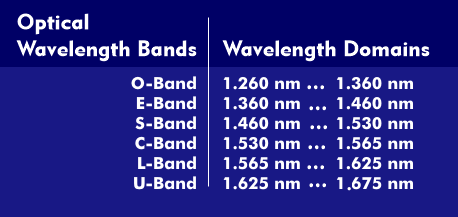S band
- According to the ITU nomenclature, the S-band comprises the microwave frequencies between 2 GHz and 4 GHz. The average wavelength is 10 cm. The S-band is further subdivided in itself. For microwave technology and radar applications, the IEEE has specified the S-band between 2 GHz and 4 GHz. This frequency range is used for IMT-2000, UMTS, for mobile satellite systems, WLANs, Bluetooth, for radar systems and many other radio technologies. Insatellite transmission and intercontinental links, the frequency range is from 1.55 GHz to 5.20 GHz. In satellite transmission, the S-band at 2 GHz is also used for the downlink for mobile satellite radio. According to the older German frequency band designation , the S band lies between 2.6 GHz and 3.95 GHz. There is also a special S-band for satellite radio between 2.7 GHz and 3.5 GHz.
- The designation S-band (short) also exists in optical transmission technology with Wavelength Division Multiplexing(WDM). Wavelength For wavelength division multiplexing, the International Telecommunication Union (ITU) has specified the wavelength range between 1,260 nm and 1,675 nm under G.694.2. The optical S-band covers wavelengths between 1,460 nm and 1,530 nm. It lies in the second telecommunications window and has three wavelengths spaced 20 nm apart for CWDM technology.

